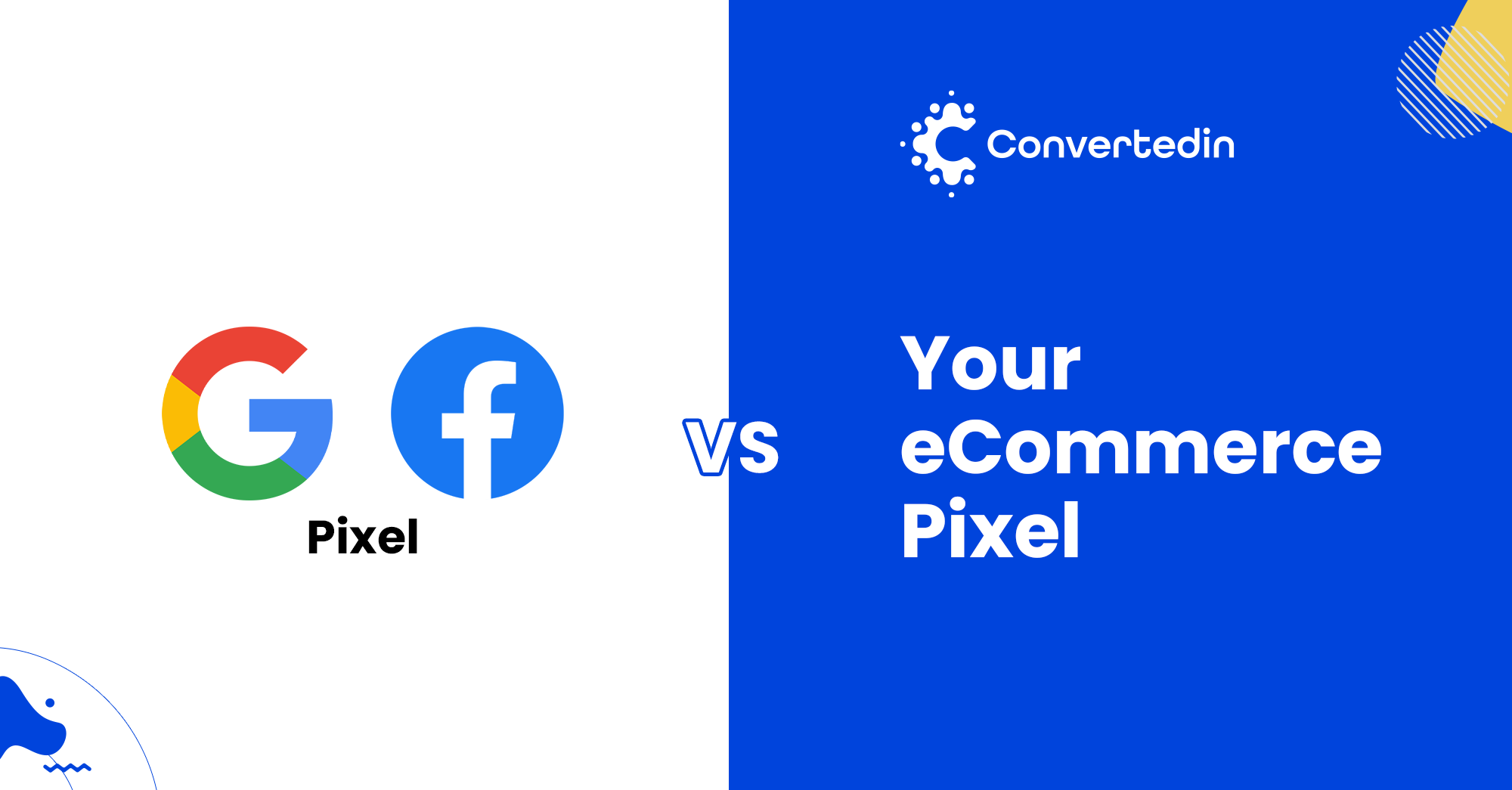How To Utilize Facebook Custom Audiences in E-commerce
From reports across the web, utilizing Facebook ads may get very expensive in the long run, so you must tailor your Facebook advertising to the customers who are very likely to convert. With the help of Facebook custom audiences, businesses can segment and target their potential customers with incredible precision. The possibility that you can use factual information (demographics data e.t.c.) that is unique to your business alone is one of the main advantages of targeting custom audiences.
Although it may appear complex at first, if you fully understand what to do, running campaigns to target personalized audiences is fairly simple. In this detailed article, we will explain the various types of custom audiences and how to create and strategically use them in E-commerce to drive more customers per dollar spent on Facebook custom audiences campaigns. Sit up, and let's get started!
What are the types of Facebook Custom Audiences?
Online retailers create or build Facebook custom audiences using various data sources. Here are the top five Custom Audiences categories offered to advertisers. These are:
- App activity based -Custom Audiences
- Offline activity based -Custom Audiences
- Website activity based -Custom Audiences
- Customer list based -Custom Audiences
- Engagement-based -Custom Audiences
-
Custom Audiences based on App Activity
The best strategy to target demographics that will most likely engage when directed to your eCommerce store app is by building an app activity-based audience. You can easily transfer data through your app to Facebook by leveraging the Facebook SDK. Marketers can then filter the custom audiences they prefer to target in their campaigns.
An efficient strategy will involve using the Conversion or Traffic objective to run an ad engagement promotion for your online store app. Through this means, you might discover that users who have already downloaded and used your app respond to your adverts more favorably.
Note: To start creating or building Custom Audiences for your app activity campaigns, you must register and authenticate your app. Configure the Facebook SDK and gather (collect) app events via Facebook for the Developers Site.
After Facebook authenticates your app, it's time to create Custom Audiences for app activity promotions.
Steps on how to create app activity-based custom Audiences
Step 1: From the Custom Audiences page, choose "App activity". After that, click on "Next".
Step 2: At this stage, "choose the app" you will be collating your contacts from and adding a description and audience's name for the campaign.
Step 3: After selecting your app, customize your target audience based on any in-app events that may compromise users/buyers who have: previously purchased, spent a specific sum of money, added card payment information, e.t.c.
Step 4: After you have selected the app audience, you can then target your custom audience.
-
Custom Audiences based on Offline Activity
Creating custom audiences based on Offline Activity is vital to effectively monitor buyers who will likely complete their overall purchases in an offline mode or setting. The audience will continually update according to the offline activities and information gathered over the last 180 days and supplied within your set timeframe.
Follow these steps: How to create an Offline Activity based on custom audiences.
Step 1: From the Custom Audiences home screen, choose Offline activity, then click "Next" when completed.
Step 2: Choose any of the "Offline Event Activity" you prefer to track and tag your audience with a Description and a Name.
Step 3: If your account doesn't show the 'Offline Event Sets" option, you must create one before proceeding. Follow the guide provided by Facebook to set up the account for yourself through the "Meta Events Manager"
Step 4: Create your custom audience after you have chosen the Offline Event type of your choice.
-
Website Activity Based -Custom Audiences
Ecommerce retailers can create an audience of all website visitors or users that came to your online store from various sources across the web using Custom Audiences. Afterward, you can accurately segment them into groups based on their online behavior, such as the specific pages they spent time on while in your store.
For instance, the Facebook Pixel available via your website can further track visitors' actions when they visit your website, click on a service or product to check it, and don't make a purchase afterward. You can then use the information to build a Custom Audience tailored to that visitor.
Follow the steps below to create Custom Audiences for Website Activity.
Advertisers or online e-commerce store owners can use the steps below to build custom audiences for their businesses based on past website visitors' activity on your website.
Step 1: Log in to your Facebook account and navigate to Ads Manager.
Step 2: Navigate to the Meta ads bar/menu and click/select "Audiences". Click on the "create a custom (target) audience tab.
Step 3: From the next screen, select the appropriate source or location for the preferred audience you wish to create; in this case, that source is the website. Then select Next.
Step 4: At this stage, select the website visitors that Facebook will use for the Custom Audience. To do this, navigate and click on the Events drop-down option. The options tab opens an array of parameters you can choose based on; time spent by visitors, all website users' data, specific pages visited by some users, e.t.c.
Step 5: Finally, add a description and a name for the campaign so that you can remember it later. Once you have done that, select "Create Audience".
-
Customer list based -Custom Audiences
If you have enough contact information about your consumers, such as phone numbers and email addresses, you can connect your customer data to Facebook and create or build audiences based on the data.
How to create Custom Audiences based on Customer List
Step 1: Download all the required CSV files of the customers or the leads you intend to reach from the available file/record you have.
Step 2: Navigate to the Custom Audiences menu and select the Customer list tab shown to you.
Step 3: You can now begin creating a Custom Audience from your current customer lists. To accomplish this, you can use one of the two methods below;
- Get all your customer list or data from any of the marketing programs you are using and import it. For instance, if your business use Mailchimp, select "Import via Mailchimp" and proceed as directed.
- Import a TXT or CSV file: You must pay attention to the file's formatting when manually importing the list as a TXT or CSV file to make sure Facebook can process the information you're giving. Facebook links users with the customer data you provided through advanced identifiers like phone numbers, names, and email addresses. By including more identifiers, Facebook will be more accurate in matching all the available data if you use many identifiers.
Step 4: At this stage, you must now inform Facebook if you haven't or have added a unique customer value to the list, you are creating. Once done, click on the "Next" button.
Step 5: Upload the list, add a description, and add a name to the target audience. After that, cross-check all relevant details to see that it's correct. At this stage, click on the "Import and Create" menu to complete the setup.
-
Engagement-based -Custom Audiences
In general, engagement based -Custom audience focuses on users that have interacted with your company through the Meta or Facebook suite of applications, services, and tools. For this campaign, you can choose the "engagements" based on actions like watching videos, visiting Facebook sites, e.t.c.
Steps to create an engaging custom audience
Select your target group
Note: Facebook allows businesses to set engagement audiences for videos, Instagram accounts, lead forms, etc.
In this section, we will illustrate how to create a video-based engagement audience. From the screenshot above, it's much easier to set up this since all the options are available in the menu area. Going further, choose the specific videos you want the data to fetch from -to build the custom audience.
Are the outlined steps above; too cumbersome to follow when creating Facebook Custom Audiences?
For a fact, the manual method takes a lot of time and is prone to errors. Instead of having to go over this process every time you create an audience, you can effectively integrate your customer lists and email marketing contacts with the Facebook Custom Audiences by using the "easy-to-use" and "affordable" ConvertedIn .
How to Increase Custom Audience and Effectively use it in E-commerce
The best and proven way to boost your custom audience is by accurately segmenting your users based on Traits or Behavior. But the question is this; can humans keep track of all this data to build a large customer base of target audiences? The answer is no.
While competitors might not tell you this secret, the majority of online retailers utilize the ConvertedIn application to segment their customer data into various categories or segments like; abandoned carts, visited products twice, high-value users, blog visitors, e.t.c.
After segmenting the audiences into appropriate groups, ConvertedIn synchronizes the available data with Facebook efficiently and accurately with its robust Artificial Intelligence feature. And guess what? 99.9% of users recorded significant turnover growth and an overall boost in customer base.
Wrapping Up
Converting visitors into buyers is the foundation for growth for all eCommerce businesses. Implementing Facebook Custom Audiences will enable you to specify and deliver advertising to the appropriate customers.
If you have not fully digested this information in this write-up, grab a cup of coffee, stay relaxed, and go over it again. See you at the top!!


